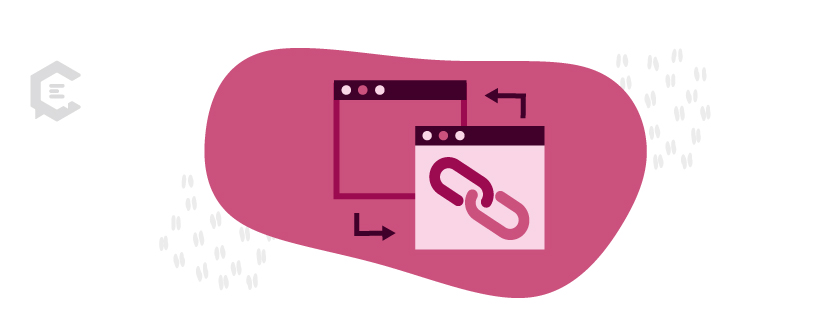Search engine optimization (SEO) is critical to the content process. It helps get the right eyes on your content.
SEO comprises a variety of techniques that are constantly evolving. Although all factors are vital, there is one area that you can’t overlook.
Backlinks. Earning backlinks plays a huge part in getting your content ranked on Google and other search engines.
Let’s look into the different types of backlinks, how to create content that earns them, and seven tips for getting it right.
What exactly are backlinks?
Backlinks are links that lead from one website to another.
For example, whenever you create a piece of content and include a link to an external source, that source has earned a backlink from you.
Backlinks are an essential component of SEO.
They show search engines that other websites consider your content valuable and relevant. Also, the more backlinks a website has, the more likely it is to rank higher on search engine results pages (SERPs).
In fact, research shows that Google’s first-ranking website has an average of 3.8x more backlinks than websites in positions 2 through 10.
Backlinks also help you build domain authority (DA). DA is a ranking factor that predicts how high a website will rank in the SERPs. Getting high-quality backlinks will increase your site’s DA.
However, as usual, quality trumps quantity.
Google uses complex algorithms to determine the quality of backlinks. It considers factors like the authority of the linking website, the relevance of the content surrounding the link, and the anchor text used in the link.
There are different kinds of backlinks that will improve your website’s SEO.
These include:
- Editorial: Editorial backlinks are naturally earned when other websites link to your content because they find it valuable.
- Directory: Directory backlinks are links that are on online directories.
- Social media: Social media backlinks are links shared on social media platforms.
How to earn natural backlinks
Natural backlinks are links you receive without asking for them. This tends to occur naturally with well-written, high-quality content that solves problems.
Before creating content that earns natural backlinks, you’ll first need to develop a deep understanding of your target audience. This process begins with keyword research that is relevant to your niche. Using that data to inform your content strategy will enable you to create unique, valuable, and shareable content.
In doing so, you’ll improve your chances of earning natural backlinks.
Below, we review some other methods for building backlinks:
7 ways to build backlinks
Now that you understand the importance of backlinks, it’s time to take action. Here’s how you can start getting backlinks and bring more visibility to your content.
1. Develop valuable, relevant, and high-quality content
The first step to earning backlinks is to create content that other websites will want to link to. This means creating content that provides value to your target audience. Whether it’s educational, entertaining, or useful in some other way.
Make sure your content is also relevant to your niche or industry. This will increase the odds that other websites in your industry will want to link to it.
2. Promote your content
Once you’ve created your content, the next step is actively promoting it.
This is critical because no matter how good your content is, no one will link to it if they can’t find it. Simplify it for your audience by getting it in front of them through various channels, like social media and email marketing.
Promoting your content gets it in front of more people. Increasing the chances that other websites will discover it and link to it.
3. Reach out to relevant websites
Another effective way to build backlinks is to contact relevant websites and ask them to link to your content.
When doing this, it’s essential to personalize your outreach and explain why your content is a good fit for their audience. Make sure also to provide the link you’d like them to use.
Tools like Ahrefs, Moz, and Semrush help identify potential link-building opportunities. You can also use them to analyze your competitors’ backlink profiles.
4. Guest blogging
Guest blogging involves writing a blog post for another website or publication and including a link to your website in the post.
You get started with guest blogging by identifying websites that accept guest posts. Make sure their audience and content align with yours. Then write compelling, valuable content and follow any guidelines provided. Aim to build a relationship with them to increase the likelihood of future guest blogging opportunities.
5. Broken link building
Broken link building involves identifying broken links on other websites and then offering to replace them with your links. Get started with tools like Check My Links or Ahrefs’ broken link checker. Then, reach out to the website owner and offer to replace the broken link with a link to your own content.
6. Contribute to industry discussions
Participating in industry discussions can help you build relationships within your industry.
Look for forums, social media groups, or other online communities related to your industry. Then, participate in discussions. Share your knowledge and expertise and provide your insights.
Eventually, this can help establish you as a thought leader in your industry. It will also increase the likelihood that other websites will link to your content.
7. Create eye-catching visuals
Creating high-quality visuals is an easy way to help build more backlinks for your site. This could be infographics, checklists, tables, graphs, custom graphics, and more. Other sites may use your visuals and link to your site as the source, giving you a backlink each time.
Start amplifying your content by getting backlinks
Writing is a labor of love, and when you publish a piece of content, you want to share it as far and wide as possible. Earning backlinks will help broaden your reach and get your content in front of a larger audience.
Follow these strategies to earn natural backlinks and drive more traffic to your content. This strategy will improve your website’s ranking and get your content in front of the right people.
ClearVoice can guide you during this process. Get in touch with us to see how we can help.







